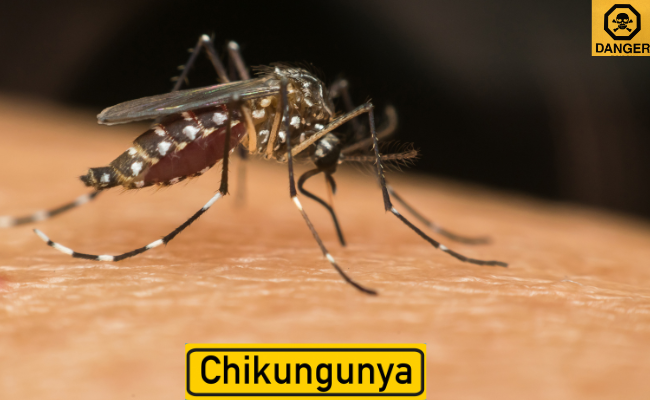How to Treat Chikungunya?
- December 09, 2023
- No Comments

What is Chikungunya?
Chikungunya, a viral infection transmitted by Aedes aegypti and Aedes albopictus mosquitoes, leads to symptoms such as fever, severe joint pain, muscle pain, headache, nausea, fatigue, and rash. Despite its low fatality, Chikungunya can cause persistent and debilitating joint pain lasting weeks or months. The infection occurs when an individual is bitten by an infected mosquito. Person-to-person transmission doesn't occur through contact or saliva.
Named "chikungunya" for the bent-over posture resulting from joint pain, there's no specific medication or vaccine. Treatment focuses on symptom management, with most recovering within a week, though some may endure lasting joint pain. Prevention includes avoiding mosquito bites through protective clothing and insect repellent. Travelers to affected areas should remain cautious, as uninfected mosquitoes could spread the virus, especially within a week post-infection.
Why Does Chikungunya Occur?
Chikungunya is caused by the Chikungunya virus (CHIKV), which is primarily transmitted to humans through the bites of infected female mosquitoes. These mosquitoes acquire the virus by feeding on the blood of an infected person. Once infected, the mosquitoes can transmit the virus to other individuals through subsequent bites. Chikungunya outbreaks are more likely to occur in tropical and subtropical regions, where these mosquito species thrive.
How to Identify Chikungunya?
Identifying Chikungunya involves recognizing its characteristic symptoms, which typically appear 2 to 7 days after being bitten by an infected mosquito:
- Fever: Sudden onset of high fever is a common early symptom of Chikungunya.
- Joint Pain: Severe joint pain, often affecting multiple joints, is a hallmark of Chikungunya. The pain can be debilitating and persistent.
- Muscle Pain: Intense muscle pain and stiffness may accompany joint pain.
- Headache: Persistent headache is another common symptom.
- Nausea and Fatigue: Nausea, fatigue, and general malaise are often reported by individuals with Chikungunya.
- Rash: A rash may develop, typically within a few days of the onset of fever.
- Conjunctivitis: Redness and inflammation of the eyes (conjunctivitis) may occur.
Treatment Solutions for Chikungunya:
- Symptomatic Treatment: There is no specific antiviral treatment for Chikungunya. Treatment primarily focuses on relieving symptoms. Over-the-counter pain relievers, such as acetaminophen or paracetamol, can help manage fever and reduce pain.
- Rest and Hydration: Adequate rest and hydration are essential. Patients are advised to rest to allow their bodies to recover and stay well-hydrated to prevent dehydration.
- Pain Management: Nonsteroidal anti-inflammatory drugs (NSAIDs) may be prescribed to manage pain and inflammation. However, caution is advised in severe cases, as NSAIDs can contribute to complications.
- Avoiding Mosquito Bites: Since Chikungunya is transmitted through mosquito bites, individuals with the infection should take measures to avoid being bitten, such as using insect repellent, wearing long sleeves and pants, and staying in screened or air-conditioned accommodations.
- Vector Control: Controlling the mosquito population is crucial in preventing the spread of Chikungunya. This involves eliminating standing water where mosquitoes breed and using insecticides.
- Supportive Care: In severe cases, hospitalization and supportive care may be required. This is particularly important for individuals experiencing complications such as severe joint pain or neurological symptoms.
Benefit Points of Treating Chikungunya:
- Symptom Relief: Treatment aims to alleviate symptoms, providing relief from fever, joint pain, and other discomforts associated with Chikungunya.
- Prevention of Complications: Early and appropriate treatment can help prevent complications and reduce the severity of symptoms.
- Enhanced Recovery: Symptomatic treatment, rest, and proper hydration contribute to a faster and more complete recovery from Chikungunya.
- Reduced Mosquito Exposure: Measures taken to avoid mosquito bites not only prevent further transmission of Chikungunya but also reduce the risk of other mosquito-borne infections.
- Community Health Protection: Vector control and public health measures protect communities from Chikungunya outbreaks, contributing to overall public health.
- Research and Vaccine Development: Treating Chikungunya patients contributes to the understanding of the virus, aiding ongoing research and the development of potential vaccines.
Comments (0)